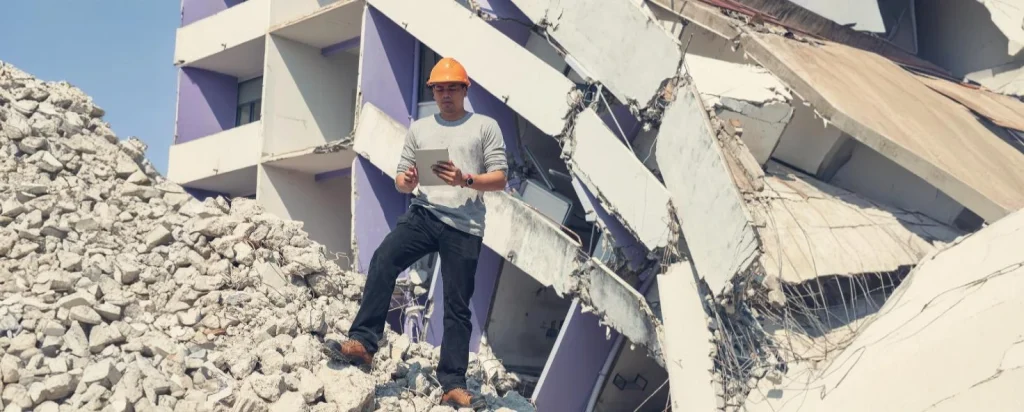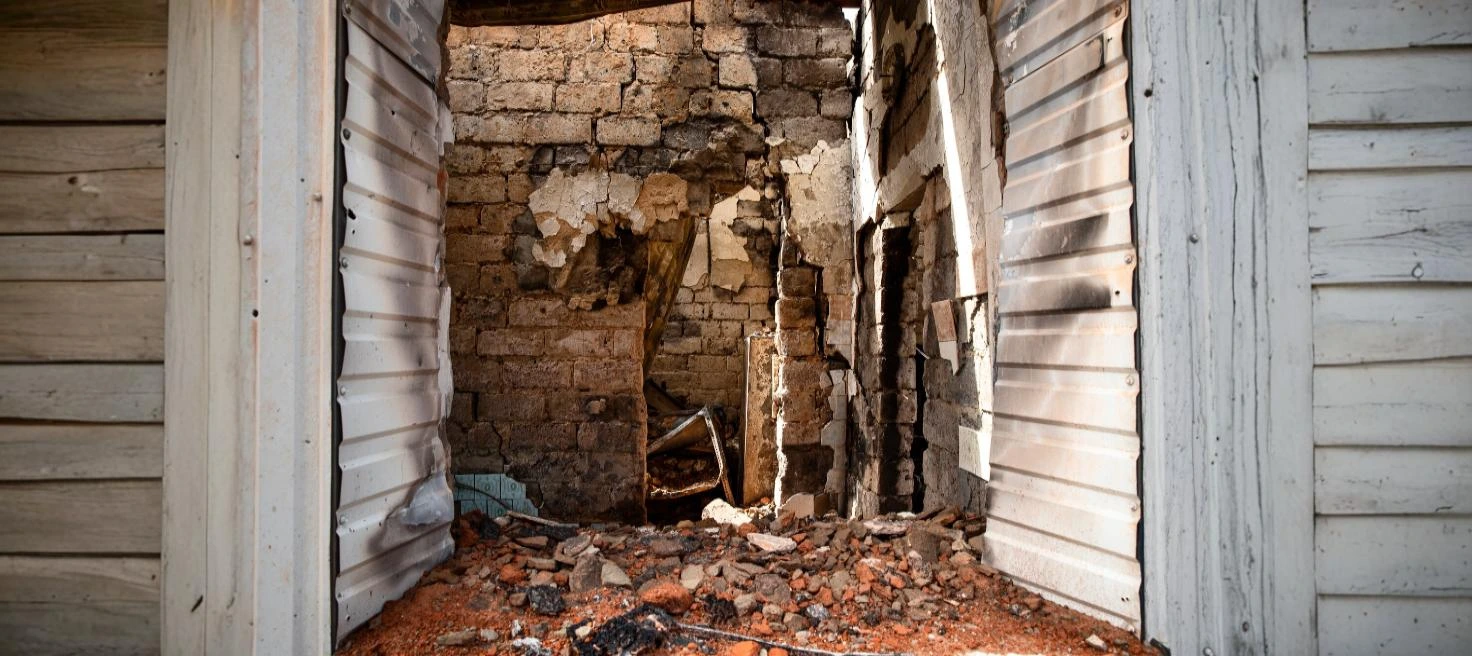Defects in construction are defined as errors that take place during the construction life cycle and are caused by the misuse of tools or careless behaviours. Every structure has a life of its own, and defects in construction affect the functionality and safety of these structures. Any building that is exposed to human-made or natural hazards can result in construction defects. In today’s modern world, it is very easy to overlook material defects or workmanship errors that result in defects in various forms and can affect residential, commercial and industrial buildings. The new technology and modern infrastructures have led people to explore construction on a large scale. This Brick & Bolt blog includes understanding the different types of defects, their causes, methods and maintenance measures that are needed to reduce risks and ensure quality construction.
Types of Construction Defects
Here are some different types of defects:
1. Material Defects
2. Workmanship Defects
3. Structural Defects
4. Design Defects
5. Maintenance-Related Defects
Construction defects can be broadly classified into the following categories:
1. Material Defects
Construction material that is of low-quality, faulty, or inappropriate results in material defects as it will lead to premature wear, failure, or unsafe conditions. For example:
- Concrete defects like cracking and spalling happen because of low-grade concrete.
- Inferior bricks that crumble under stress or moisture exposure.
- Defective steel with low tensile strength.
2. Workmanship Defects
There are many construction defects because of poor workmanship. It is a general term for incorrect construction work, like:
- Incorrect mixing or placement of concrete.
- Misaligned or poorly bonded masonry.
- Inadequate waterproofing or sealing.
3. Structural Defects
Structural defects are critical issues that affect the stability, strength and safety of the building. Structural defect examples are:
- Structural cracks in walls and floors can be due to the settlement of the foundation.
- Defective beams, columns, or load-bearing components.
- Failures in lateral load-resisting systems.
4. Design Defects
Flaws in the architectural or engineering design can result in construction defects. Common issues are:
- Inadequate load calculations lead to structural failures.
- Damage and water buildup are the result of poor drainage designs.
- Failing to meet with building codes and safety standards.
5. Maintenance-Related Defects
Improper or careless maintenance after construction can lead to secondary defects. These issues include:
- Detention of materials due to weather exposure.
- Corrosion of steel reinforcement.
- Blocked drainage systems that allow water to enter.
Causes of Construction Defects

Construction defects can be allocated to various factors, often overlapping in their impacts:
1. Poor selection of material
Employing the wrong type of material for specific environmental conditions and load requirements leads to material defects. For example, in rainy climates using bricks with high water absorption will result in the weakening of the structure.
2. Lack of monitoring and supervision
Poor or inadequate supervision during the construction phase might bring about poor workmanship, such as poor execution of concreting, curing, and reinforcement placement.
3. Errors in design
Flaws in the planning and design phase, like unreasonably high estimates of loads for structures or unaccounted drastic decreases in temperatures, can bring the structure’s reliability into question.
4. Environmental factors
Extreme temperature, increased percentage of humidity, or corrosive elements can bring about faster decay of materials. This is more true with concrete defects which can develop shrinkage cracks and carbonation.
5. Not Following the Guidelines
Building structures without following mandatory quality standards and defined building codes and specifications for structures will lead to failures in structures. This is common in workmanship failure and structural failures.
How to Identify Construction Defects
Early identification of construction defects is essential to reduce possible risks and the expenses of future repair works. Some effective methods are:
1. Visual Inspections
Regular inspections will expose some of these visible failures like:
Cracks in the concrete, plaster or masonry.
Discolouration, water patches, or water stains showing leaks.
Deformation or misalignment of structural elements.
2. Non-Destructive Testing (NDT)
There are advanced methods like ultrasonic testing, infrared thermography and ground-penetrating radar (GPR) that can find hidden defects without damaging the structure. For example:
- Infrared thermography defects moisture intrusion and insulation gaps.
- Ultrasonic pulse velocity testing evaluates the quality of concrete.
3. Structural Monitoring
Instruments like strain gauges, accelerometers, and load cells—categorized under various Types of Gauges—are used to measure a building’s response to loads and detect early signs of structural instability.
4. Material Sampling and Testing
Tests can be performed on construction material samples to check if they are in compliance with the specifications. For example, a sample of concrete can be checked for compressive strength. Steel may also be tested for its tensile properties along with corrosion resistance.
How to Fix Construction Defects
Choice of repair techniques to rectify a construction defect considers the type and quality of the defect. Below are some common methods used to solve specific construction defects.
1. Material Defects
- Remove the defective material and substitute it with a better quality one. For instance, for spalled concrete repair, the damaged part should be removed and filled with bonding of high-strength repair mortar after placing a bonding agent.
- Protective coating materials are used to stop further destruction of existing parts.
2. Structural Cracks
- For minor cracks, inject epoxy into the crack to restore the structural integrity of the component.
- Large cracks can receive additional support from steel bars, carbon sheets, or other supporting materials.
3. Water Leakage and Dampness
- Solving water ingress problems by using waterproofing membranes, sealants, and drainage systems.
- Identify and repair the source of the leak, like the crack on the roof or walls.
4. Foundation Issues
- To assist in correcting settlement or foundation failure, methods such as underpinning, grouting or piling can be employed.
5. Corrosion of Reinforcement
- Corroded steel can be treated by removing rust, applying anti-corrosion coatings, and replacement of damaged sections if necessary.
Preventing Construction Defects
1. Quality Assurance and Control: Apply strict quality control measures during material purchase, construction work, and inspections.
2. Skilled Workforce: Have construction activities done by properly trained staff under experienced supervision.
3. Following the Rules: Following local building codes, safety regulations, and manufacturer requirements to verify compliance and quality.
4. Regular Maintenance: To reduce or minimise the defects over time routine maintenance tasks like doing waterproofing, repainting, and structural inspections are important.
5. Effective Communication: By working together and communicating properly, architects, engineers, contractors, and stakeholders can reduce the communication gaps during the design and operation phase.
Defects in construction can happen for lots of reasons, like lack of funds that lead to the use of poor materials, lack of skills or poor planning of the project. These can result in small issues to major structural cracks. It is important to understand the types of defects, their cause and prevention measures. This helps an engineer, architect or builder to promise a safe and durable construction project. Actions like strict quality control, skilled labour and regular maintenance are important to prevent defects and minimise their impact.

